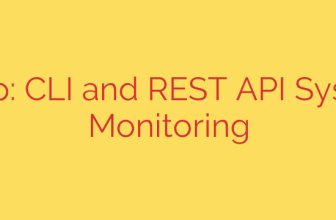
Critical Security Alerts: Salesforce Data Extortion and a Flaw in CentreStack
In the fast-paced world of digital security, staying informed is the first line of defense. This week, two significant threats have emerged, demanding immediate attention from IT administrators and business leaders. A new extortion campaign is actively targeting misconfigured Salesforce sites, while a critical vulnerability has been discovered in CentreStack’s file-sharing software, potentially allowing for complete server takeovers.
Here’s a breakdown of these threats and the essential steps you need to take to protect your organization.
New Extortion Tactic Targets Misconfigured Salesforce Sites
Cybercriminals have developed a new strategy to exploit a common, yet easily overlooked, security weakness in Salesforce deployments. This campaign specifically targets companies using Salesforce Community or Experience sites, leveraging misconfigurations to access and steal sensitive data before demanding a ransom.
The core of the issue lies not in a flaw within Salesforce itself, but in how some organizations have set up their public-facing sites. Attackers are exploiting misconfigured public guest user access permissions. When these permissions are too broad, they allow unauthenticated visitors—essentially, anyone on the internet—to view and exfiltrate data that should be private.
Here’s how the attack unfolds:
- Discovery: Attackers use specialized tools, such as the “Salesforce Dumper,” to scan the internet for vulnerable Salesforce sites with overly permissive guest user settings.
- Data Exfiltration: Once a vulnerable site is found, the tool automatically extracts sensitive data from accessible objects and records.
- Extortion: The attackers then contact the victim organization, providing proof of the stolen data and demanding a ransom payment, often in cryptocurrency like Bitcoin, to prevent the data from being leaked publicly.
This data extortion scheme bypasses the need for traditional malware or phishing, relying solely on exploiting a security misconfiguration. It serves as a stark reminder that even the most secure platforms can be compromised by human error.
How to Protect Your Salesforce Data
Protecting your organization from this threat requires a proactive review of your Salesforce security posture.
- Audit Guest User Permissions: Immediately review the access levels granted to guest users on your Salesforce Community and Experience sites. Ensure that public access is strictly limited to only the data that is absolutely necessary for public viewing.
- Implement the Principle of Least Privilege: This security concept is crucial. Guest users should have the absolute minimum level of access required for their intended function—and nothing more.
- Follow Salesforce Security Best Practices: Salesforce provides extensive documentation on securing Community sites. Consult their official guides to ensure your configuration aligns with recommended security standards.
- Regularly Monitor for Suspicious Activity: Keep an eye on access logs and data export reports to quickly identify any unusual or unauthorized activity.
Critical Remote Code Execution Flaw in CentreStack (CVE-2024-3701)
A separate but equally severe threat has been identified in CentreStack, a popular managed file sync and sharing solution. A high-severity vulnerability, tracked as CVE-2024-3701, could allow an unauthenticated attacker to achieve Remote Code Execution (RCE) on a vulnerable server.
This type of vulnerability is particularly dangerous because it allows an attacker to execute their own code on your server without needing any login credentials. The flaw stems from an uncontrolled file upload mechanism. An attacker could upload a specially crafted file (such as a malicious .jsp file) to a specific endpoint, which then allows them to take control of the system.
The potential impact is catastrophic. A successful exploit could lead to a complete server compromise, giving the attacker the ability to steal data, install ransomware, or use the server as a launchpad for further attacks within your network.
Urgent Steps for CentreStack Users
Given the severity of this vulnerability, immediate action is required for all organizations using CentreStack.
- Patch Immediately: The developer has released a patch to address this vulnerability. All users should update their CentreStack instances to version 14.4.8848 or later as soon as possible.
- Verify the Update: After applying the patch, confirm that the update was successful and that your instance is running the new, secure version.
- Investigate for Compromise: If you were running a vulnerable version, it is wise to review server logs for any signs of suspicious file uploads or unusual activity that may have occurred before the patch was applied.
Staying ahead of cyber threats requires constant vigilance. By auditing configurations and applying security patches promptly, organizations can significantly reduce their risk of falling victim to these evolving attack methods.
Source: https://www.helpnetsecurity.com/2025/10/12/week-in-review-hackers-extorting-salesforce-centrestack-0-day-exploited/








